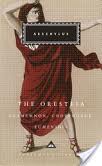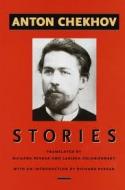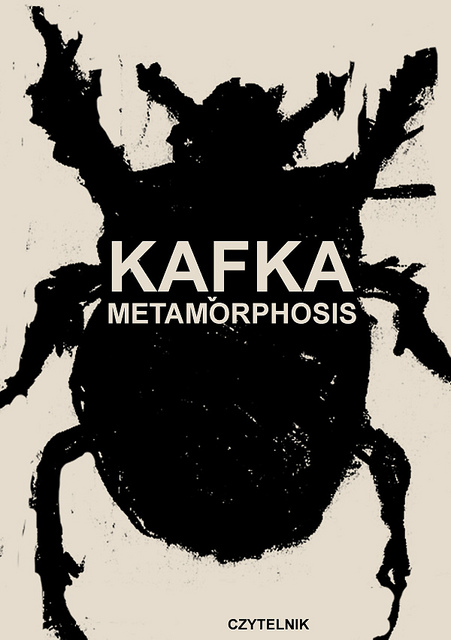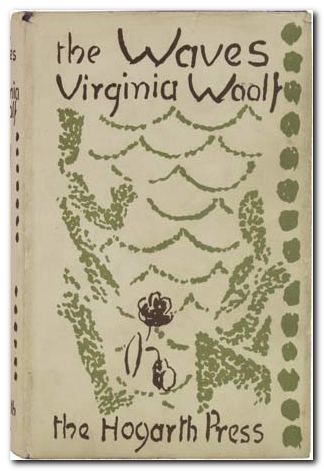Author Photo And Bio
Jane's picks are in chronological order.
 1. The Oresteia by Aeschylus (458 b.c.e.). Before Freud there was Aeschylus, who revealed the mind’s darkest impulses through this trilogy of plays mapping the mad round of retaliations that bring down the royal house of Atreus. In the first play, the Greek King Agamemnon— who sacrificed his daughter Iphigenia to appease the gods before setting sail for the Trojan War— and his slave, Cassandra, are slain by his wife, Clytemnestra. In the second play, Clytemnestra is slain by her son, Orestes (egged on by his sister Electra to avenge their father’s murder). In the final play, Orestes is freed from the Furies (or the curse) because, unlike the other characters— who search for scapegoats— he admits his own culpability, ending the cycle of violence through personal responsibility.
1. The Oresteia by Aeschylus (458 b.c.e.). Before Freud there was Aeschylus, who revealed the mind’s darkest impulses through this trilogy of plays mapping the mad round of retaliations that bring down the royal house of Atreus. In the first play, the Greek King Agamemnon— who sacrificed his daughter Iphigenia to appease the gods before setting sail for the Trojan War— and his slave, Cassandra, are slain by his wife, Clytemnestra. In the second play, Clytemnestra is slain by her son, Orestes (egged on by his sister Electra to avenge their father’s murder). In the final play, Orestes is freed from the Furies (or the curse) because, unlike the other characters— who search for scapegoats— he admits his own culpability, ending the cycle of violence through personal responsibility.
 2. King Lear by William Shakespeare (1605). Considered one of Shakespeare’s four “core tragedies”—with Hamlet, Othello, and Macbeth—King Lear commences with Lear, having achieved great age but little wisdom, dividing his kingdom among his three daughters in return for their proclamations of love for him. Two of his daughters, evil to the core, falsely profess their love, while Cordelia, his good and true daughter, refuses his request. Enraged, Lear gives his kingdom to his evil daughters and banishes Cordelia. Lear pays a dear price for this rash act. The play systematically strips him of his kingdom, title, retainers, clothes, and sanity in a process so cruel and unrelenting as to be nearly unendurable.
2. King Lear by William Shakespeare (1605). Considered one of Shakespeare’s four “core tragedies”—with Hamlet, Othello, and Macbeth—King Lear commences with Lear, having achieved great age but little wisdom, dividing his kingdom among his three daughters in return for their proclamations of love for him. Two of his daughters, evil to the core, falsely profess their love, while Cordelia, his good and true daughter, refuses his request. Enraged, Lear gives his kingdom to his evil daughters and banishes Cordelia. Lear pays a dear price for this rash act. The play systematically strips him of his kingdom, title, retainers, clothes, and sanity in a process so cruel and unrelenting as to be nearly unendurable.
 3. Pride and Prejudice by Jane Austen (1813). “It is a truth universally acknowledged, that a single man in possession of a good fortune must be in want of a wife,” reads this novel’s famous opening line. This matching of wife to single man—or good fortune—makes up the plot of perhaps the happiest, smartest romance ever written. Austen’s genius was to make Elizabeth Bennet a reluctant, sometimes crabby equal to her Mr. Darcy, making Pride and Prejudice as much a battle of wits as it is a love story.
3. Pride and Prejudice by Jane Austen (1813). “It is a truth universally acknowledged, that a single man in possession of a good fortune must be in want of a wife,” reads this novel’s famous opening line. This matching of wife to single man—or good fortune—makes up the plot of perhaps the happiest, smartest romance ever written. Austen’s genius was to make Elizabeth Bennet a reluctant, sometimes crabby equal to her Mr. Darcy, making Pride and Prejudice as much a battle of wits as it is a love story.
 4. The stories of Anton Chekhov (1860–1904). The son of a freed Russian serf, Anton Chekhov became a doctor who, between the patients he often treated without charge, invented the modern short story. The form had been overdecorated with trick endings and swags of atmosphere. Chekhov freed it to reflect the earnest urgencies of ordinary lives in crises through prose that blended a deeply compassionate imagination with precise description. “He remains a great teacher-healer-sage,” Allan Gurganus observed of Chekhov’s stories, which “continue to haunt, inspire, and baffle.”
4. The stories of Anton Chekhov (1860–1904). The son of a freed Russian serf, Anton Chekhov became a doctor who, between the patients he often treated without charge, invented the modern short story. The form had been overdecorated with trick endings and swags of atmosphere. Chekhov freed it to reflect the earnest urgencies of ordinary lives in crises through prose that blended a deeply compassionate imagination with precise description. “He remains a great teacher-healer-sage,” Allan Gurganus observed of Chekhov’s stories, which “continue to haunt, inspire, and baffle.”

5. War and Peace by Leo Tolstoy (1869). Mark Twain supposedly said of this masterpiece, “Tolstoy carelessly neglects to include a boat race.” Everything else is included in this epic novel that revolves around Napoleon’s invasion of Russia in 1812. Tolstoy is as adept at drawing panoramic battle scenes as he is at describing individual feeling in hundreds of characters from all strata of society, but it is his depiction of Prince Andrey, Natasha, and Pierre—who struggle with love and with finding the right way to live—that makes this book beloved.
 6. Middlemarch by George Eliot (1871–72). Dorothea Brooke is a pretty young idealist whose desire to improve the world leads her to marry the crusty pedant Casaubon. This mistake takes her down a circuitous and painful path in search of happiness. The novel, which explores society’s brakes on women and deteriorating rural life, is as much a chronicle of the English town of Middlemarch as it is the portrait of a lady. Eliot excels at parsing moments of moral crisis so that we feel a character’s anguish and resolve. Her intelligent sympathy for even the most unlikable people redirects our own moral compass toward charity rather than enmity.
6. Middlemarch by George Eliot (1871–72). Dorothea Brooke is a pretty young idealist whose desire to improve the world leads her to marry the crusty pedant Casaubon. This mistake takes her down a circuitous and painful path in search of happiness. The novel, which explores society’s brakes on women and deteriorating rural life, is as much a chronicle of the English town of Middlemarch as it is the portrait of a lady. Eliot excels at parsing moments of moral crisis so that we feel a character’s anguish and resolve. Her intelligent sympathy for even the most unlikable people redirects our own moral compass toward charity rather than enmity.
 7. The Portrait of a Lady by Henry James (1881). James’s Portrait is of that superior creature Isabel Archer, an assured American girl who is determined to forge her destiny in the drawing rooms of Europe. To this end, she weds the older and more cultivated Gilbert Osmond, and eventually finds that she is less the author of her fate than she thought. Throughout, James gives us a combination of careful psychological refraction and truly diabolical plotting. The result is a book at once chilling and glorious.
7. The Portrait of a Lady by Henry James (1881). James’s Portrait is of that superior creature Isabel Archer, an assured American girl who is determined to forge her destiny in the drawing rooms of Europe. To this end, she weds the older and more cultivated Gilbert Osmond, and eventually finds that she is less the author of her fate than she thought. Throughout, James gives us a combination of careful psychological refraction and truly diabolical plotting. The result is a book at once chilling and glorious.
 8. The Metamorphosis by Franz Kafka (1915). This harrowing narrative of a clerk, Gregor Samsa, who wakes from “uneasy dreams” to find himself transformed into a giant insect, is the quintessential Kafkaesque tale. Gregor is not dreaming; he really has become a bug who hides under the sofa to keep from horrifying his mother, and who is pummeled with apples and cursed by his father. The strange magic of the story is the way Kafka sustains our empathy with this creature, such that the bizarre and claustrophobic scenes intensify, and even haunt, our awareness of human vulnerability.
8. The Metamorphosis by Franz Kafka (1915). This harrowing narrative of a clerk, Gregor Samsa, who wakes from “uneasy dreams” to find himself transformed into a giant insect, is the quintessential Kafkaesque tale. Gregor is not dreaming; he really has become a bug who hides under the sofa to keep from horrifying his mother, and who is pummeled with apples and cursed by his father. The strange magic of the story is the way Kafka sustains our empathy with this creature, such that the bizarre and claustrophobic scenes intensify, and even haunt, our awareness of human vulnerability.
 9. The Waves by Virgina Woolf (1931). This grand experiment in narrative depicts six characters—from nursery school to the brink of old age—through a series of interior soliloquies. Stages in their lives are framed by bits of description of a day on a deserted beach; the book’s finale, their reunion at a London restaurant, is a tour de force. “The light of civilization is burnt out,” one character thinks while gazing at London’s night sky in this haunting, poetic meditation on time’s passage.
9. The Waves by Virgina Woolf (1931). This grand experiment in narrative depicts six characters—from nursery school to the brink of old age—through a series of interior soliloquies. Stages in their lives are framed by bits of description of a day on a deserted beach; the book’s finale, their reunion at a London restaurant, is a tour de force. “The light of civilization is burnt out,” one character thinks while gazing at London’s night sky in this haunting, poetic meditation on time’s passage.
 10. Gravity's Rainbow by Thomas Pynchon (1973).
10. Gravity's Rainbow by Thomas Pynchon (1973).
Jane’s pick for the 21st century: The Road by Cormac McCarthy (2006).